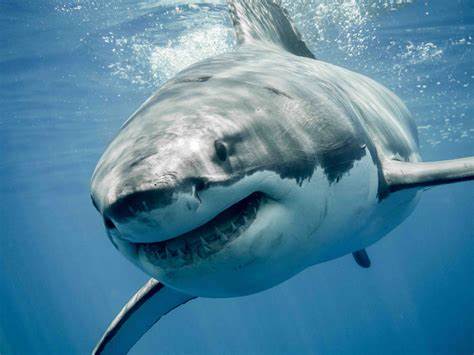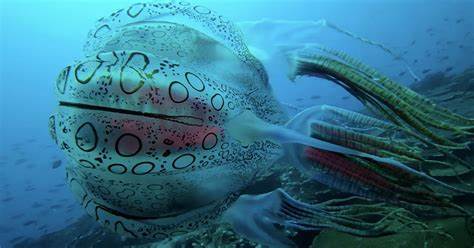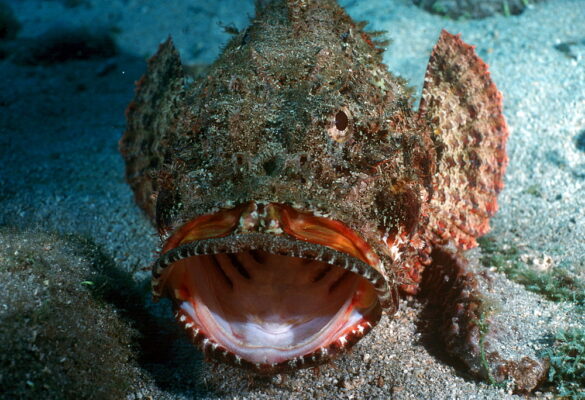The ocean is a vast and mysterious world teeming with life, and within its depths lurk some of the most dangerous ocean animals known to mankind. From fearsome predators to tiny creatures capable of delivering powerful venom, these animals demonstrate the incredible diversity and adaptability of life in marine environments. In this article, we will dive deep into the lives and traits of these fascinating yet perilous creatures, exploring what makes them both awe-inspiring and threatening.

Understanding the Ecosystem of Dangerous Ocean Animals
The ocean is often referred to as one of Earth’s last frontiers, harboring mysteries that are yet to be uncovered. Within its depths, certain species have evolved to become masters of survival, often at the expense of other creatures. This section aims to shed light on the delicate balance of marine ecosystems and how the most dangerous ocean animals fit into this intricate web of life.
The Role of Predators in Marine Ecosystems
Predators play a crucial role in maintaining the health and balance of marine ecosystems. By controlling the population sizes of various species, they contribute to the overall biodiversity of the ocean.
Large predators, like sharks and orcas, help regulate fish populations, preventing overpopulation and ensuring that prey species remain robust and genetically diverse. This natural cycle fosters healthy communities where various organisms can thrive, showcasing the interconnectedness of life beneath the waves.
However, human activities such as overfishing and habitat destruction pose significant threats to these predatory species. As our oceans face increasing challenges, it becomes essential to understand their importance in sustaining marine health.
Consequences of Disruption in Marine Food Chains
When apex predators are removed or their populations decline, the effects ripple through the entire ecosystem. For instance, the absence of sharks can lead to an overabundance of mid-level predators, which may then decimate populations of smaller fish and other marine organisms. This phenomenon, known as trophic cascades, highlights the critical roles that the most dangerous ocean animals play in their habitats.
Moreover, the loss of key species also affects the physical environment. Coral reefs, for example, rely on a balanced ecosystem to flourish. Without the presence of certain predators to maintain fish populations, coral reefs can suffer from algal overgrowth, resulting in declines in biodiversity and habitat degradation.
Adaptations and Evolution of Dangerous Species
Many of the most dangerous ocean animals have developed remarkable adaptations that enhance their hunting skills and survival rates. From bioluminescent lures to camouflage techniques, these evolutionary traits provide insights into how these creatures navigate their environments and interact with potential prey.
Some species of deep-sea fish possess specialized organs that produce light, allowing them to lure unsuspecting prey closer. Similarly, cephalopods like octopuses and cuttlefish employ advanced camouflage and mimicry techniques to evade predators while ambushing their own targets. These adaptations highlight the ongoing evolutionary arms race present in ocean ecosystems.
These examples illustrate not only the ingenuity of evolution but also the fascinating intricacies of predation in the ocean.
Top Dangerous Ocean Animals and Their Unique Traits
From jellyfish to sharks, the most dangerous ocean animals exhibit an array of characteristics that make them formidable inhabitants of the sea. In this section, we will explore some prominent examples, uncovering what sets each of them apart and how they have earned their notorious reputations.
The Great White Shark: Apex Predator of the Sea
The great white shark is arguably one of the most recognized and feared marine animals worldwide. Characterized by its size, speed, and power, this magnificent predator has garnered both admiration and trepidation.
With their keen sense of smell and acute hearing, great whites are exceptional hunters. They can detect a single drop of blood in the water from miles away, enabling them to locate injured or vulnerable prey with impressive precision. Their hunting style—often employing surprise attacks from below—adds to their fearsome reputation.
Despite being vilified in popular culture, it’s vital to recognize that great whites play a crucial role in marine ecosystems. As apex predators, they help maintain the health of the ocean by keeping populations of marine mammals and fish in check.
Box Jellyfish: A Beautiful But Lethal Creature
The box jellyfish is a mesmerizing creature adorned with delicate, translucent tentacles that glide gracefully through the water. However, their beauty hides a deadly secret: they are among the most venomous marine animals on the planet.
Box jellyfish possess specialized cells called nematocysts, which contain potent toxins used for capturing prey and defending against threats. When human contact occurs, these toxins can cause excruciating pain, paralysis, and even death in severe cases.
What makes the box jellyfish particularly fascinating is its ability to navigate through the water intelligently. Recent studies suggest these creatures can react to their surroundings and potentially learn from experiences, challenging our understanding of intelligence in simple organisms.

Stonefish: Experts at Camouflage
Regarded as one of the most venomous fish in the world, the stonefish is a master of disguise. This bottom-dwelling fish possesses a body covered in spiky, camouflaged skin that allows it to blend seamlessly into rocky surfaces or sandy seabeds.
Stonefish deliver venom through dorsal fin spines, and their sting can cause excruciating pain, swelling, and in some cases, death. Despite their lethality, they tend to remain motionless, using their camouflage to ambush unsuspecting prey.
This combination of stealth and venom exemplifies the unique strategies that dangerous ocean animals use to survive in their environments. It raises intriguing questions about predator-prey dynamics and how adaptation shapes behavior in marine life.
Tiger Shark: The Opportunistic Hunter
The tiger shark is notorious for its indiscriminate appetite, often dubbed the “garbage can of the sea.” Unlike many other predators, tiger sharks have a diverse diet that includes fish, seals, birds, and even debris found in the ocean.
With powerful jaws lined with serrated teeth, they can consume a wide variety of prey items, enhancing their adaptability as hunters. Their migratory nature allows them to traverse large distances in search of food, further solidifying their status as opportunistic feeders.
While their reputation as dangerous predators precedes them, tiger sharks also serve important ecological roles. They help regulate populations of marine mammals and fish, contributing to the balance of life in their habitats.
The Impact of Human Activity on Dangerous Ocean Animals
Human activity poses numerous threats to the delicate balance of marine ecosystems, including the most dangerous ocean animals. This section explores the impacts of pollution, climate change, and overfishing on these remarkable creatures and their habitats.
Pollution and Its Effects on Marine Life
Various forms of pollution, from plastic waste to chemical runoff, have devastating effects on marine ecosystems. Many dangerous ocean animals, such as sharks and sea turtles, can ingest plastic debris, leading to injury or death.
Chemical pollutants can disrupt hormonal systems and reproductive capabilities in fish and other marine animals. As toxins accumulate in the food chain, apex predators like sharks become increasingly vulnerable to the harmful effects of these substances, leading to declines in their populations.
In addressing the problem of pollution, it is critical to consider how these factors impact not just specific species, but entire ecosystems. Collective action is necessary to mitigate pollution and protect vulnerable ocean environments.
The Effects of Climate Change
Climate change presents an existential threat to marine ecosystems. Rising ocean temperatures disrupt breeding patterns, migration routes, and feeding behaviors of various marine species. The most dangerous ocean animals are no exception, with shifting environmental conditions impacting their survival.
For instance, as water temperatures rise, some fish species migrate toward cooler waters, affecting the distribution of predators that rely on them for food. Additionally, coral bleaching—a result of stressed marine environments—has dire consequences for the multitude of species that depend on coral reefs as habitats.
Understanding the implications of climate change on marine ecosystems is vital for implementing conservation strategies and ensuring the survival of dangerous ocean animals.
Overfishing and Its Consequences
Overfishing remains one of the most pressing issues facing marine life today. Unsustainable fishing practices not only threaten targeted species but also disrupt entire ecosystems. Many apex predators, including sharks, are particularly affected by overfishing, leading to population declines that compromise ecological stability.
By removing large numbers of predatory fish from the ocean, we risk destabilizing food webs and allowing prey populations to explode unchecked. The ramifications of overfishing extend beyond individual species, ultimately endangering the health of entire marine ecosystems.
Promoting sustainable fishing practices and creating marine protected areas can help reverse some of the damage caused by overfishing, ensuring the future of both dangerous ocean animals and the broader marine environment.
Conservation Efforts and Initiatives
Efforts to conserve dangerous ocean animals and their habitats are gaining momentum around the globe. Various organizations and researchers are collaborating to study populations, establish protected marine areas, and promote awareness of the importance of these creatures.
Conservation initiatives often focus on developing sustainable practices in fisheries, regulating tourism, and reducing pollution in coastal areas. Public education plays a critical role in garnering support for these efforts, encouraging individuals to take action in protecting ocean habitats.
Innovative solutions, such as community-based management approaches and technological advancements in monitoring, are paving the way for more effective conservation strategies. Ultimately, preserving the existence of the most dangerous ocean animals requires collective responsibility and commitment to safeguarding marine ecosystems.

Conclusion
The world of the most dangerous ocean animals is one filled with wonder and danger. From the apex predator prowess of great white sharks to the stunning yet lethal beauty of box jellyfish, these creatures embody the complexity of life beneath the waves. Understanding their roles in marine ecosystems, the impacts of human activities, and ongoing conservation efforts provides us with valuable insights into the health of our oceans.
As stewards of the environment, it is our responsibility to advocate for the protection of these remarkable beings and the habitats they inhabit. Through increased awareness and sustainable practices, we can foster a healthier relationship with the ocean and ensure that these fascinating animals continue to thrive for generations to come.
